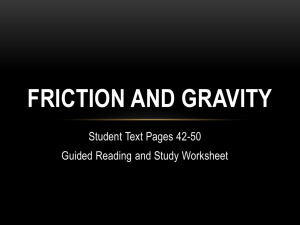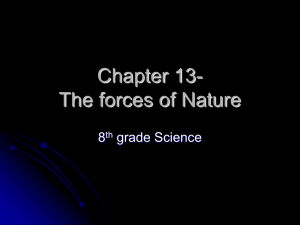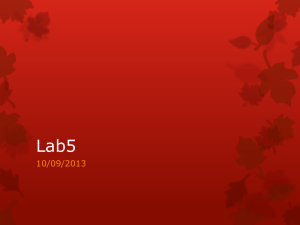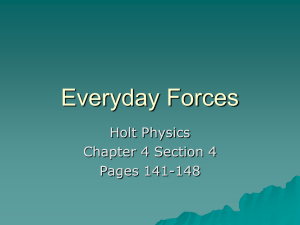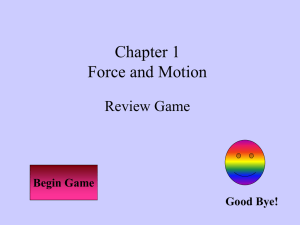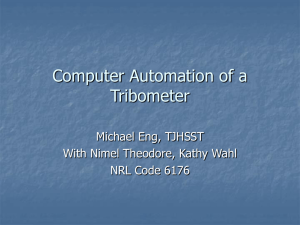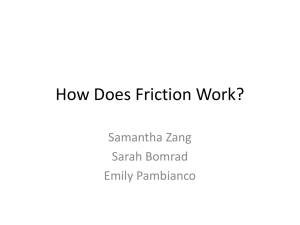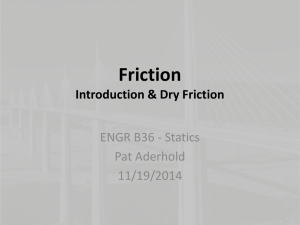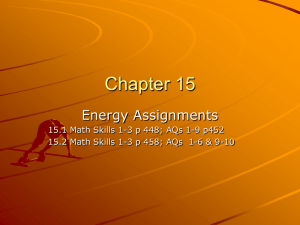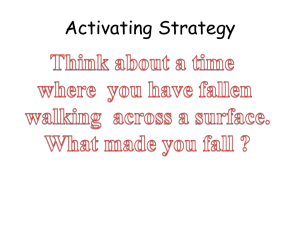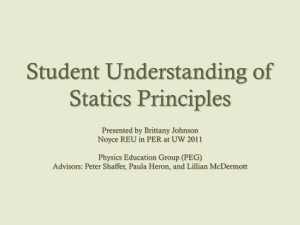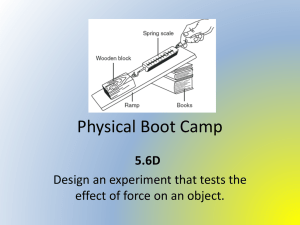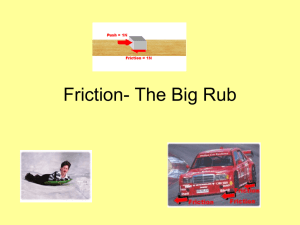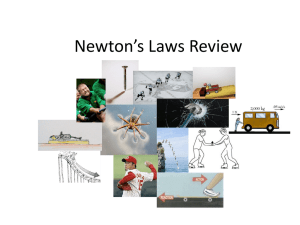Chapter 2
advertisement
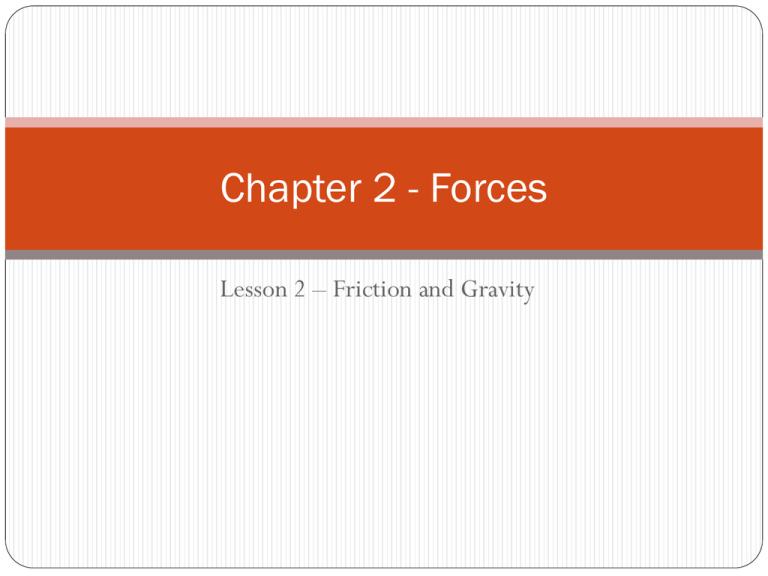
Chapter 2 - Forces Lesson 2 – Friction and Gravity The force that two surfaces exert on each other when they rub against each other is called friction. The strength of the force of friction depends on two factors: How hard the surfaces push together The types of surfaces involved. Friction also increases of surfaces push hard against each other. If you rib your hands together forcefully, there is more friction than if you rub your hands together lightly. There are four types of friction: Static Friction Sliding Friction Rolling Friction Fluid Friction Static Friction The friction that acts on objects that are not moving. Because of static friction, you must use extra force to start the motion of stationary objects. Sliding Friction Occurs when two solid surfaces slide over each other. Rolling Friction When an object rolls across a surface. This type of friction is important to engineers who design certain products. Skates, skateboards, and bicycles need wheels that move freely. Fluid Friction Fluids, such as water, oil, or air, are materials that flow easily. Fluid friction occurs when a solid object moves through a liquid. Gravity Gravity is a force that pulls objects towards each other. Two factors affect the gravitational attraction between the objects: Mass and Distance. Mass is a measure of the amount of matter in an object. The more mass an object has, the greater its gravitational force. Weight is the force of gravity on a person or object at the surface of a planet. Weight varies with the strength of gravitational force but mass does not. Gravity and Motion When the only force acting on an object is gravity, the object is said to be in free fall. An object in free fall is accelerating. In free fall, the force of gravity is an unbalanced force, which causes an object to accelerate. Air Resistance Objects falling through air experience a type of fluid friction called air resistance. Air resistance is not the same for all falling objects. Objects with a greater surface area experience more air resistance. If the leaf and the acorn fell at the same time, the acorn will hit first. The greatest velocity a falling object reaches is called terminal velocity. Terminal velocity is reached when the force of air resistance equals the weight of the object. Projectile Motion An object that is thrown is called projectile. When you throw an projectile at an upward angle, the force of gravity reduces its vertical velocity.


